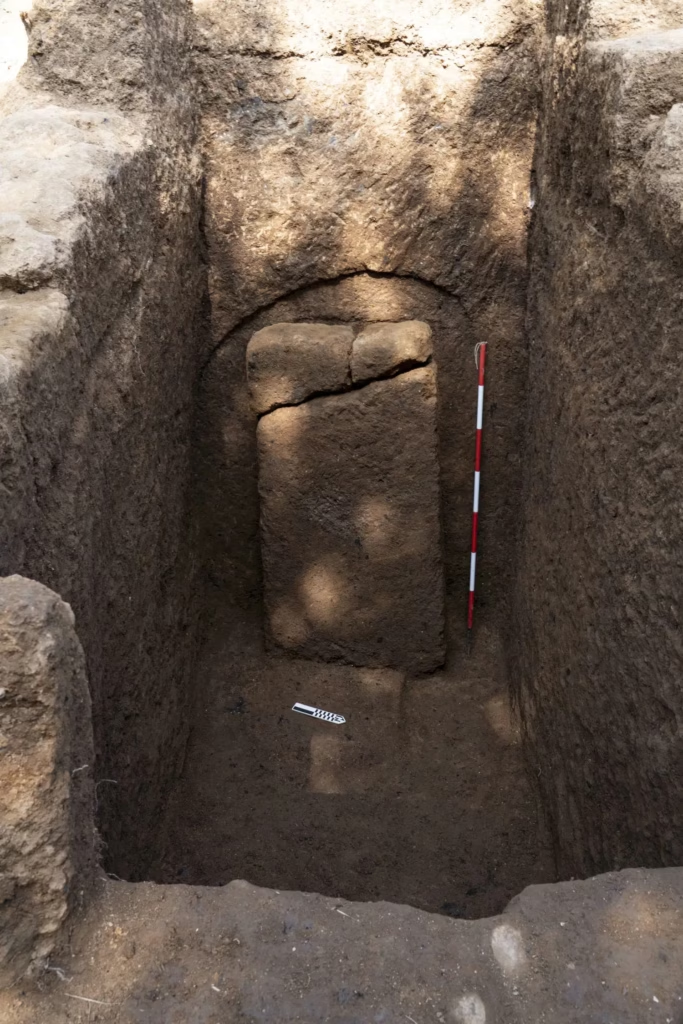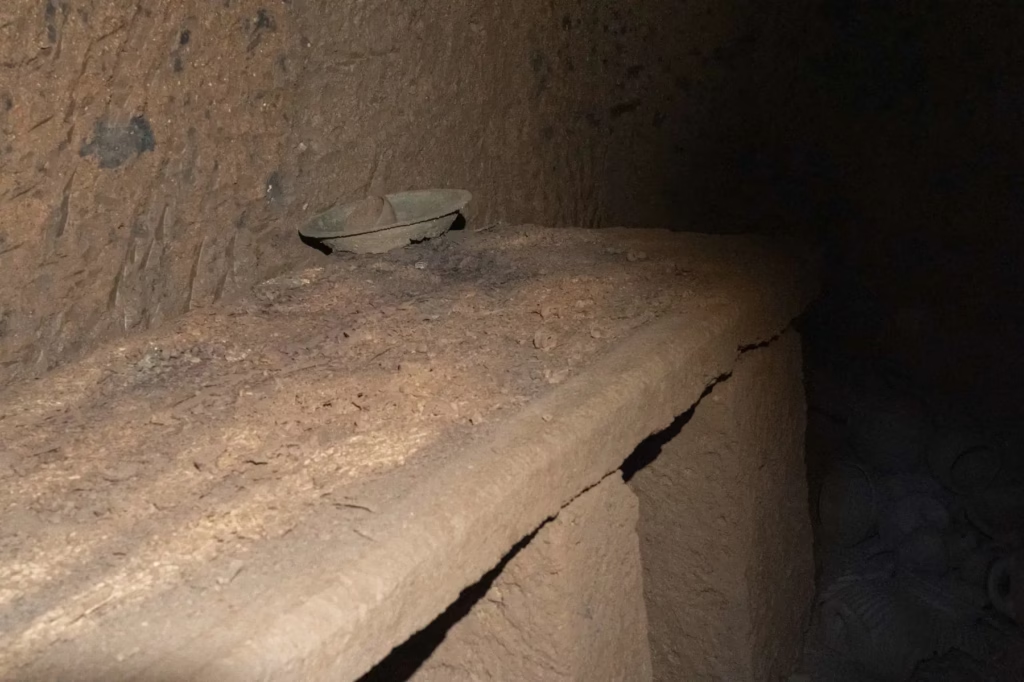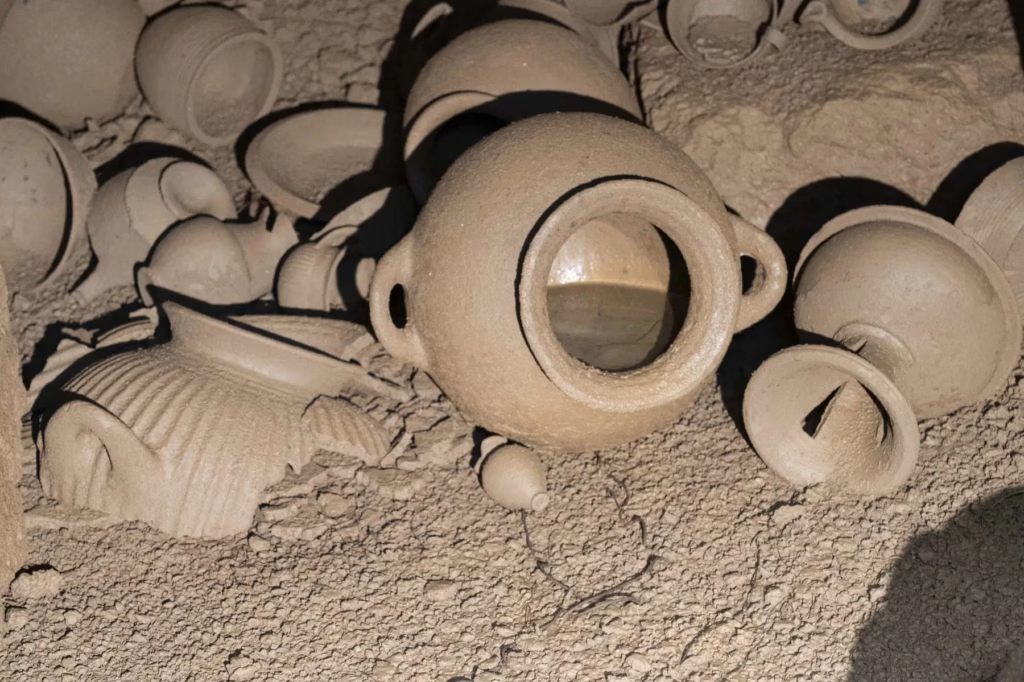A rare and remarkably well-preserved tomb dating back nearly 2,700 years has been unearthed in Barbarano Romano, near Viterbo in central Italy. The sealed rock-cut chamber, attributed to the Etruscan civilization, was discovered in the ancient necropolis of San Giuliano, offering valuable insights into early funerary practices.
A Time Capsule from the 7th Century B.C.
The tomb, dating to the end of the 7th century B.C., belongs to the final phase of the Orientalizing period in Etruscan history. What makes this discovery extraordinary is that the burial chamber was sealed with a large stone slab, keeping its contents untouched for millennia. When archaeologists removed the slab, they found a range of funerary objects in pristine condition.

Clues to Ancient Etruscan Burial Rituals
Inside the chamber, researchers uncovered numerous ceramic vessels, many adorned with intricate geometric patterns characteristic of Etruscan art. Bronze ornaments and a basin placed near one of the funerary beds suggest that complex rituals were performed before the tomb was closed. A particularly striking find is a vase located at the tomb’s entrance, likely used in ceremonial rites during the burial.
Archaeologists are currently documenting every item in situ before beginning a full stratigraphic excavation, which will help determine the identity and social status of the deceased.

One of the Few Untouched Tombs in the Region
The San Giuliano necropolis contains over 500 tombs, most of which have been looted in antiquity or more recent times. Finding an intact burial site is therefore extremely rare. This discovery is not only significant for the wealth of artifacts it holds, but also because it offers a rare, unspoiled look into the funerary customs of early Etruscan culture.

A Breakthrough for Etruscan Archaeology
Experts believe that the contents of the tomb will contribute significantly to the understanding of social structures, beliefs, and rituals in one of Italy’s most enigmatic ancient civilizations. The find is being hailed as one of the most important Etruscan discoveries in recent years.
Superintendency for Archaeological, Fine Arts and Landscape Heritage




